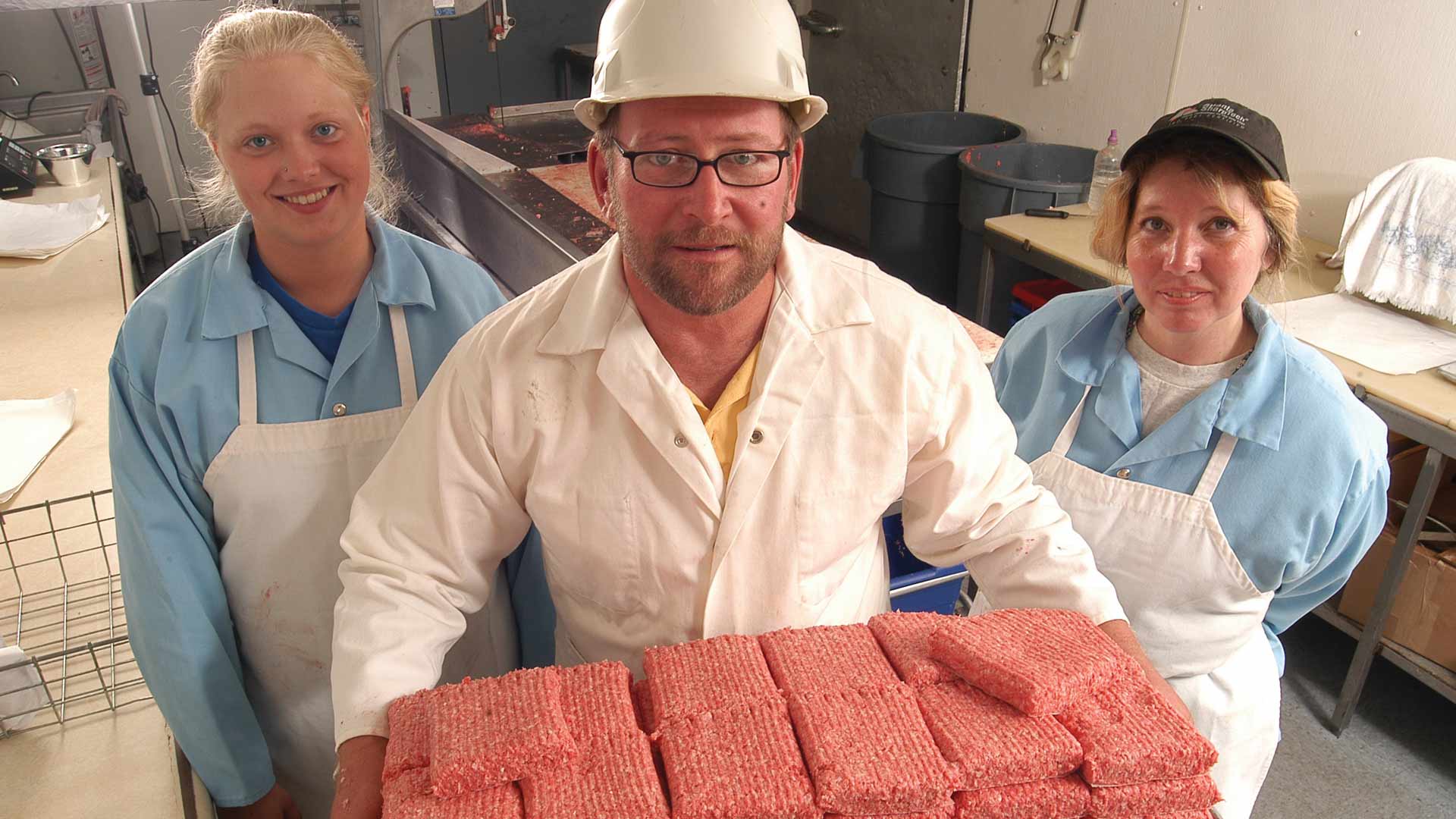–by Carissa Nath
The meat industry employs what are called interventions throughout meat processing to improve the quality, safety, and functionality of meat products. This concept is known as the multi-hurdle concept. Several interventions, also known as barriers or hurdles, have to be put into place in order to prevent harmful bacteria from making their way into the final product.
Oftentimes these interventions are the application of organic acids to the product. However, research into new and advanced interventions is continual. In addition, today’s consumer is seeking cleaner labeled foods, which means they want foods that are minimally processed, natural, or organic and that have ingredients they are familiar with. Therefore, interventions that will allow products to be made with minimal ingredients such as preservatives or other additives are ideal.
High-Pressure Processing
High-Pressure Processing extends the shelf life of products without having to add preservatives and other additives. This appeals to those consumers who are seeking minimally processed or clean labeled foods. The technology works by placing the packaged food product in a sealed vessel. High pressure is then applied in all directions to the packaged product.
The process is considered a cold or non-thermal process, which prevents alterations of taste, texture, and nutrition. Since the process is applied to the food in its final packaged state, the risk of recontamination is greatly reduced. In addition, having access to products that have a longer shelf life leads to less food waste at the retail and consumer level.
Traditionally this process is applied to fully cooked, ready-to-eat meat products versus fresh, raw products. However, the potential for application in raw products is being investigated. Also, many advancements in packaging have been investigated. Since high pressure is applied to the package, it must be able to withstand and hold up to this stress. The packaging must be flexible yet durable.
Ozone Technology
Ozone is a highly reactive form of oxygen and therefore is a strong oxidant and potent disinfecting agent. Here’s how ozone is made: oxygen normally exists as dioxygen (O2), but through this process the dioxygen molecule is split into single oxygenatoms. These single oxygen atoms combine with the remaining dioxygen molecules to form a very reactive O3 molecule. These O3 molecules are very unstable, so they must be generated at the time of use. The highly reactive molecules are then added to water for use in sanitation and other food safety intervention applications.
Ozone technology has been utilized as a sanitation intervention for food contact surfaces within processing facilities for a number of years; however, it does have the potential to be directly applied to meat products as well. In addition, ozone is considered an environmentally friendly sanitizer as it quickly decomposes
into oxygen.
Bacteriophages
Bacteriophages are live viruses that enter the bacteria’s cell wall and devour it. They can be utilized to target specific food-borne pathogens and were first approved for use by the Food and Drug Administration in food in 2006. In the meat industry, bacteriophages have been approved as a pre-harvest intervention to control E. coli O157:H7 on cattle hides. Further, bacteriophages are approved for application in red meat parts prior to grinding to, again, control E. coli O157:H7. Also, bacteriophages can be applied as a post-processing intervention for ready-to-eat products to control Listeria monocytogenes.
These three interventions show great promise to help the meat processing industry add to their food safety toolbox.

